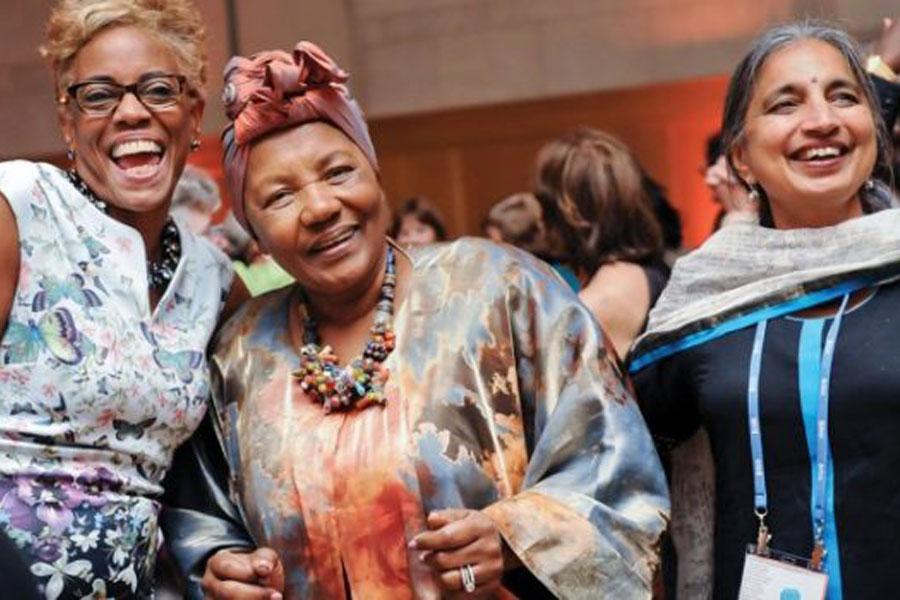Finding deep connection means celebrating both our similarities and our differences.
Last week I wrote about how moving it was to witness my sister’s graduation from her PhD program. This week has me thinking back on my own education—specifically my time as an undergraduate at Barnard College.
An article I wrote for my alma mater just went live, and it happens to come right on the heels of a wonderful dinner I just had in New York with three of my college “besties.” It’s rare that we’re all together in one place, let alone all free at the same time, but when we are it’s on! We talk about everything from our love lives to our wrinkles to our kids to our careers to the ways we’re trying to make the world a better place. And naturally we have to rehash all our favorite stories from college for the thousandth time. You know, everyone thinks it’s their partner or spouse who’s going to be their soulmate for life, but the truth is, a lot of times it’s your girlfriends.
We’ve all changed and grown dramatically since college, but we’re bound together by that common experience of knowing each other when we were all very young women, before careers and partners and kids and all the rest. As a result, we can be refreshingly real and relaxed with each other. Of course, there’s plenty we don’t have in common too. We all have successful careers, but in different fields. Three of us have kids and one of us doesn’t. Three of us are black and one of us is white. All of us love music, art, justice, excellence, our families, God and NYC!
From the moment we met at college, we were trying to find our way forward. We came from varied backgrounds and experiences, and our struggles at college differed, but we found a way to understand and respect our differences while celebrating our common values and interests. Our powerful, honest and sometimes difficult dialogues that started in college and continue today have made all the difference—and this is the gist of what I wrote about in my article for Barnard.
Take a look:
I attended June’s Barnard Reunion with a group of fabulous women: architects, entrepreneurs, professors, chemists, dancers, doctors, recovering retirees, and brave nonprofit leaders who renewed my faith in women’s power to make the world a better place. I also had the honor of participating in a panel discussion titled, “Still We Rise: A Panel of Barnard Alumnae Activists,” where I experienced the incredible ability of authentic conversation to bring understanding and deep connection.
The panel was a diverse group, all Barnard alums, doing amazing work in the areas of racial equity, housing and education reform, gender violence, and LGBT rights. The skillful moderator, alum Deborah Feyerick, who was then a CNN national correspondent, inquired about our backgrounds, school experiences, and the issues of bias, sexism, racism, and classism that informed our work.
During the conversation, I mentioned the Alumnae of Color Dinner I attended on the first night of Reunion and how exciting it was for me to see so many vibrant and confident women of color at Barnard; there had been so few in my class year—’82—and we knew little of the women who had come before us. I hadn’t expected it, but I got emotional describing the dinner and explaining how my time at Barnard really incited my activism, my decision to go to Harvard Law School, and my work as a diversity and inclusion specialist in the C-suites of corporate America, and in the communities in my hometown of Baltimore.
Then quite unexpectedly, Deborah decided to get real. She turned to me and with great skill and a blameless curiosity posed the question that so many well-meaning white folks rarely feel safe asking a black woman, “Why an Alumnae of Color Dinner?” And then she added, “Do these type of events further separate the minority group from the larger population and exclude others? Wouldn’t it be better if we had events that brought everyone together from different groups, but with like minds, so that they can bridge the gaps and solve issues collectively?”
Click here to see how I answered.
Photo Credit: Barnard College


